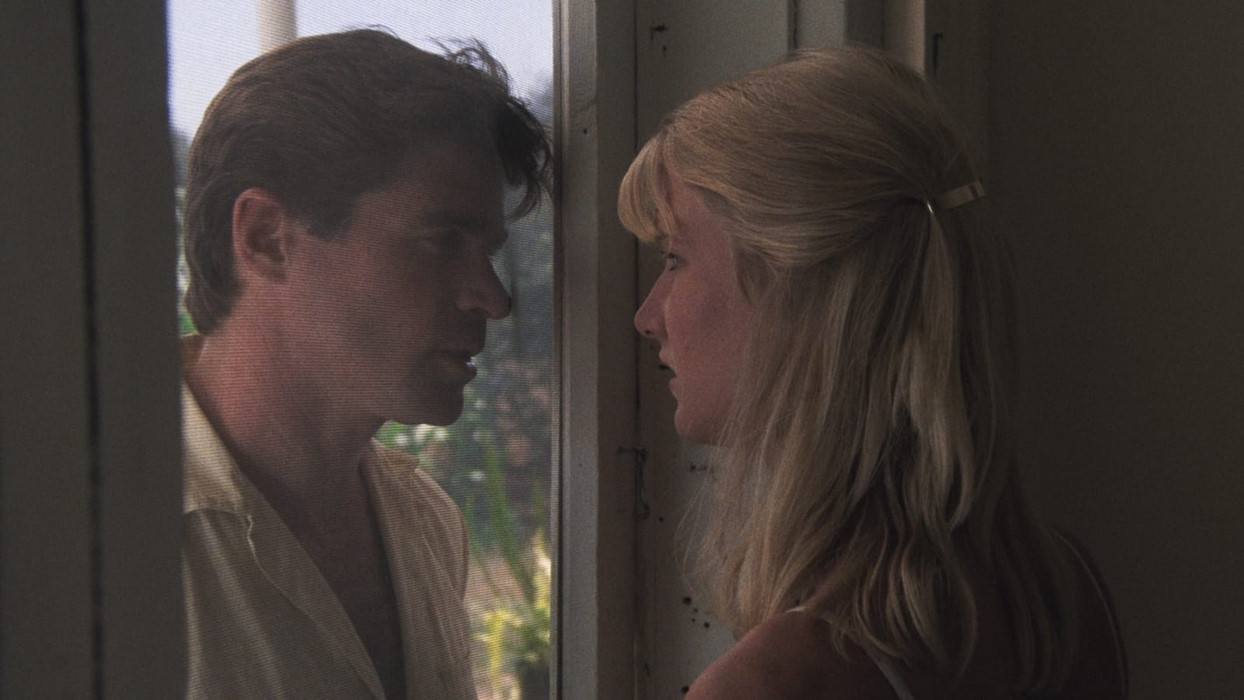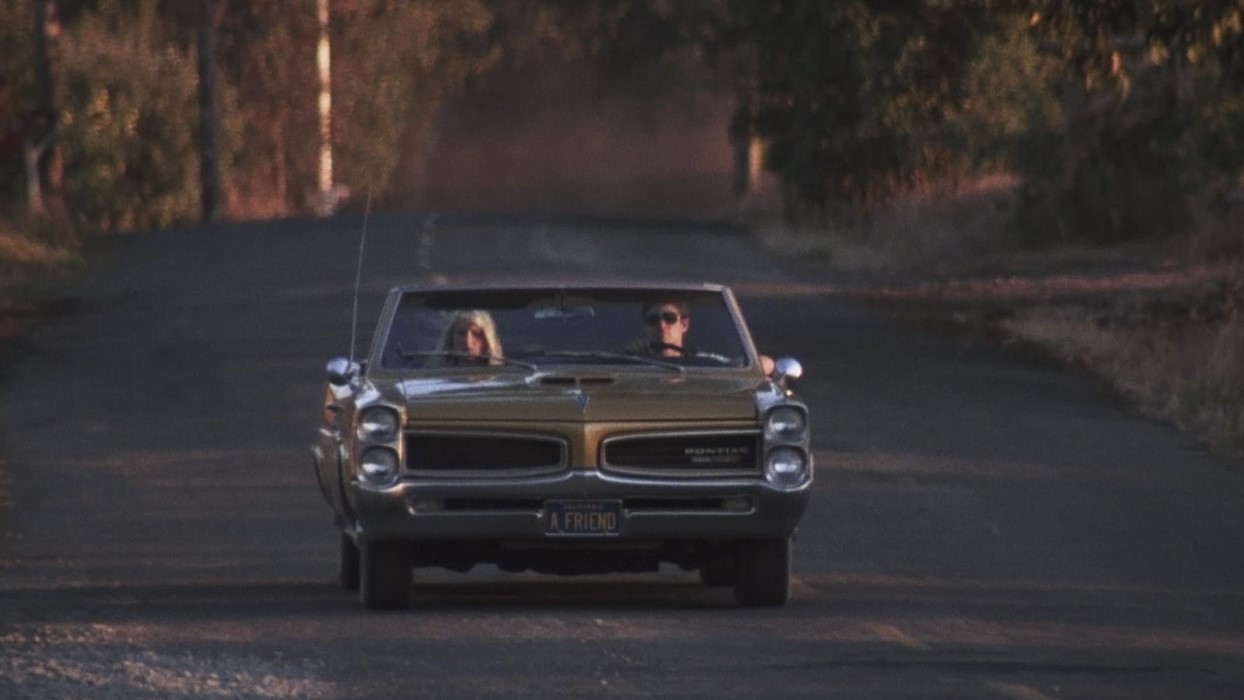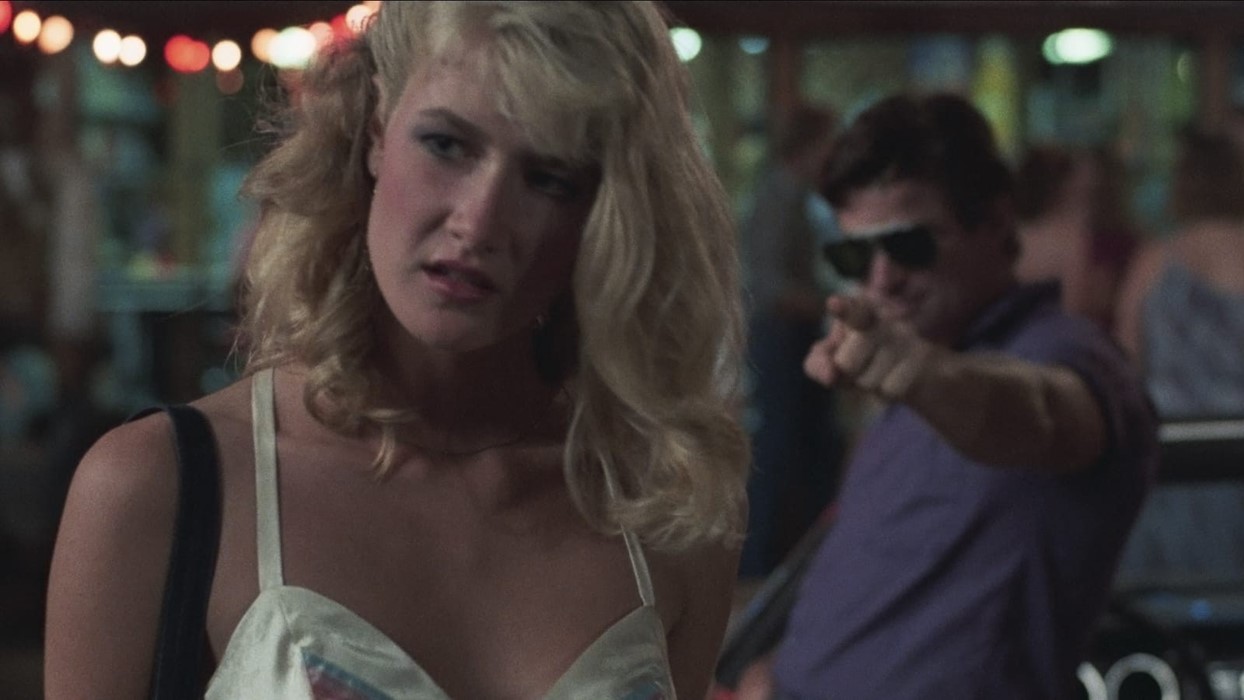As it is re-released, director Joyce Chopra opens up on her 1985 film Smooth Talk, which follows the dark side of a 15-year-old’s sexual awakening in the suburbs of northern California
Smooth Talk is a strange film that gives unprecedented space to the temporality of girlhood, the boredom that collects in the house where the sun hits, when the floors creak, inside the peculiar girls’ mess of nail polishes and beading kits and chart music on-loop – and the dangerous unreality that moves in when you spend too much time living in your daydreams. Released in 1985, the reason I call the film’s director, Joyce Chopra, this week is because culture has finally created the space her debut feature deserves, as both the springboard for the career of AnOther Magazine cover star Laura Dern, and as an overlooked gem: a troubling, dark thriller neatly pulled together in a plastic hair-barrette of family-friendly drama.
For Chopra, the renewed attention has been thrilling, as it was completely unexpected. “Having this re-release has been wonderful. I never thought that was going to happen.” The restoration showed initially at New York Film Festival in September, before going on general re-release this month (the week we speak, Criterion have also announced a DVD release in February next year). “They even showed it on a Pier in Brooklyn overlooking the Hudson river, which is the last place I ever expected it to be shown – a drive-in movie. A friend sent me a clip, [you could] even see people walking in front of the screen”.
A drive-in movie is a suitable location for a 1980s film based on a 1960s short story that has elements of 1950s rock and roll culture sticking to it like a girl’s legs on the passenger car-seat. Joyce Carol Oates’ frequently anthologised 1966 short story (Where are You Going, Where Have You Been) is a snapshot of a 15-year-old girl, who knows “that she [is] pretty and that [is] everything”, who spends her days with her friends at the shopping mall, and who doesn’t anticipate the danger that might lie in wait in her closely-held ideas of romance – and that one male stranger in particular may have been watching and waiting specifically for her. Without revealing more of their encounter, suffice to say Chopra’s adaptation doesn’t bloat the events of the short story. Instead, she maintains and strengthens their shocking and brutal power by filling in the details and context of Connie’s daily life that lead up to her meeting Arnold Friend (Treat Williams), a moment where everything will change. But even with the film’s haunting testament to the danger underpinning adult desire and sexuality, there’s something joyful and admiring in the way Chopra’s camera spends time with her central character, a space and screen-time so rarely given to flighty, giggly, wild girls – or, at least, rarely given to them when they are alone with themselves.
Unlike many women who never got to direct in this era, instead working alongside male directorial counterparts as screenwriters or production designers – just think of Polly Platt, whose constant missing-out on the directors chair is explored in the last season of You Must Remember This – Chopra and her late husband Tom Cole worked on the Smooth Talk screenplay together, with Chopra herself directing. But when we speak, Chopra humbly marvels at the team effort – and the happy, often spooky coincidences – that all came together to make the definitive film of an unfilmable story.

Claire Marie Healy: What drew you to Where are you Going, Where Have You Been?
Joyce Chopra: I’ve always been interested in teenage girls. I had made a documentary called Girls at 12. I spent many months following three best friends at 12 years old, as they go into their high school as freshmen. They changed so much during that one year. They became so boy crazy. So it’s a subject near to my heart. Joyce’s short story was in a collection of stories. My husband [Tom Cole] was a short story writer, so I was reading that [particular] collection. It haunted me when I read it. It stayed in my brain for many, many years. I always wanted to do picture films, but I didn’t know how to go about it. I didn’t know any women who were doing it, it didn’t occur to me to go to Hollywood to do it. I produced a play of my husbands for public television, and the people who were producing it said, ‘You know, if you come to us with an idea for a screenplay and you wanna direct it, we’ll produce it.’ Which was amazing. And right before that a director friend of mine challenged me to stop talking about being a director and go out and option a story. And I thought, ‘OK, I’ll call Joyce Carol Oates’ agent, because she’ll know who Tom Cole is from the short story collection’. And I optioned it for 5000 dollars! [Laughs.]. So that’s how it came about. But I never forgot that story. It’s so strong, and dark.
CMH: I’m interested in how you went about adapting it. Rather than thinking I’ll make the material of the short story longer, you essentially preface its events with the context of Connie’s life. It’s a film of two distinct halves.
JC: You just read the short story again right? There’s no father in the story. The sister is very sketched. Even the mother. And Connie herself is really a type of character rather than a person. All of them are. Obviously Arnold Friend is terrifying. But what Tom and I felt we had to do was: what was the culture, what was the environment, in which the young girl would be susceptible to the flattery of Arnold to start with? And out of that, you begin to create a world. What was that world like, what was that family like, and especially, what was the relationship with the mother like? The mother-daughter relationship was key to everything. If she hadn’t been fighting with her mother she never would have stayed home that day. Connie isn’t really seen by anyone in the film. Not the way that she wants to be seen. For the dialogue, we would pick up clues from the story. One line would prompt a whole scene. But there was stuff from Girls at 12 that wound up in the film, like the radio always on in the background, and [that] she’s stringing beads in her bedroom. In a way she’s too old to be doing that. Or my own daughter. Like the scene with them painting the house, the way the Mum is so pleased and tries to hug her, like ‘Oh Connie this is what I missed!’. When we were filming [my daughter] was 14. Whenever she would show up for breakfast I automatically leaned over and kissed her on the top of her head. One morning I did that and she pulled away and said I’m not your property! That began a few years of “Don’t hug me!” I had a feeling for this world [already].

CMH: What struck me so much was the sheer noise of the group of girls, Connie and her friends, as they move around together, like in the mall scene. Giggling, shouting, pure energy. When I was that age I would ‘go to town’ – a shopping centre, essentially – with ten other girls?
JC: Energy! They are so energetic and childish, too. One of my favourite moments is when they’re going up the escalator at the mall. My daughter’s an extra of course. We got a local high school to all be our extras after school. We had no money. The kids were great, they were just wonderful. I had the mall filled up with a couple of hundred kids who just showed up. And they just knew what to do because they all go to the mall. It’s not hard for them to pretend to shop, or lean over the balustrades.
CMH: How did you come to cast Laura, and what do you think she brings to that character?
JC: Laura came as a miracle. No, literally! We had cast Treat [Williams]. He was doing another film and had one week free, so we had to fit the schedule around him. We had read dozens of young actresses and had every major casting director looking across the country for us. And they were very fine actresses. But none of them were able to have the duality, (the way that) Laura could be a little bitchy with her mother but basically loved the character, so knew when to pull back. We had two weeks to go before shooting and we had no Connie. Needless to say I was freaking out, as was our producer, Martin Rosen. We were together in the production office one day, and he was on the phone with a friend of his who was a photographer in LA. And she happened to live on Malibu Beach, where a lot of the stars live. He was complaining like, ‘Oh what are we gonna do!’ And he described what Connie was like and she said, ‘I see her through my window, she’s walking on the beach right now.’ She didn’t say I see an actress – she said I see her. And Martin hands me the phone. And I said, ‘Could you say that again?!’ And she said, ‘I see her right now’. Soon after that I got to call Laura, and it went to answering machine. And her machine was playing Handy Man by James Taylor… the song that was in the movie. What! How can she be playing Handy Man?! She hasn’t read the script! I went to LA to bring back her audition tape. And up comes Laura to pick me up in her car. And on her stick shift is a postcard of James Dean! And we had in the script that this poster of James Dean, that very same one, would be on the wall of her bedroom. So I didn't need to hear her read, but her reading was perfect. So that’s how I met Laura.
CMH: That’s incredible. What I love about Smooth Talk, though it is a kind of a warning tale, is that it also has a lot of love and admiration for Connie herself. She is a very free individual. How did you negotiate that balance between potentially moralising about, but also celebrating, girls who are like her?
JC: I certainly didn’t intend to moralise. Joyce Carol Oates wrote an allegory, in the end. It is suggested that Connie is going to her death. So, we added the line: “What if my eyes were brown?” [when Arnold calls her his “sweet little blue-eyed girl”]. My understanding – and I discussed it with Laura, and she understood it too – was that Connie had to take power back, or try to. It is a power game between the two of them. When she says this, she is trying to convince herself, even if she is going to her death, that [if] she can regain her self-possession, she can regain herself. And [in my film], she does – she comes back. It’s that moment that turns things around.
Smooth Talk will be available via the Criterion Collection on Blu-ray and DVD February 23, 2021.
